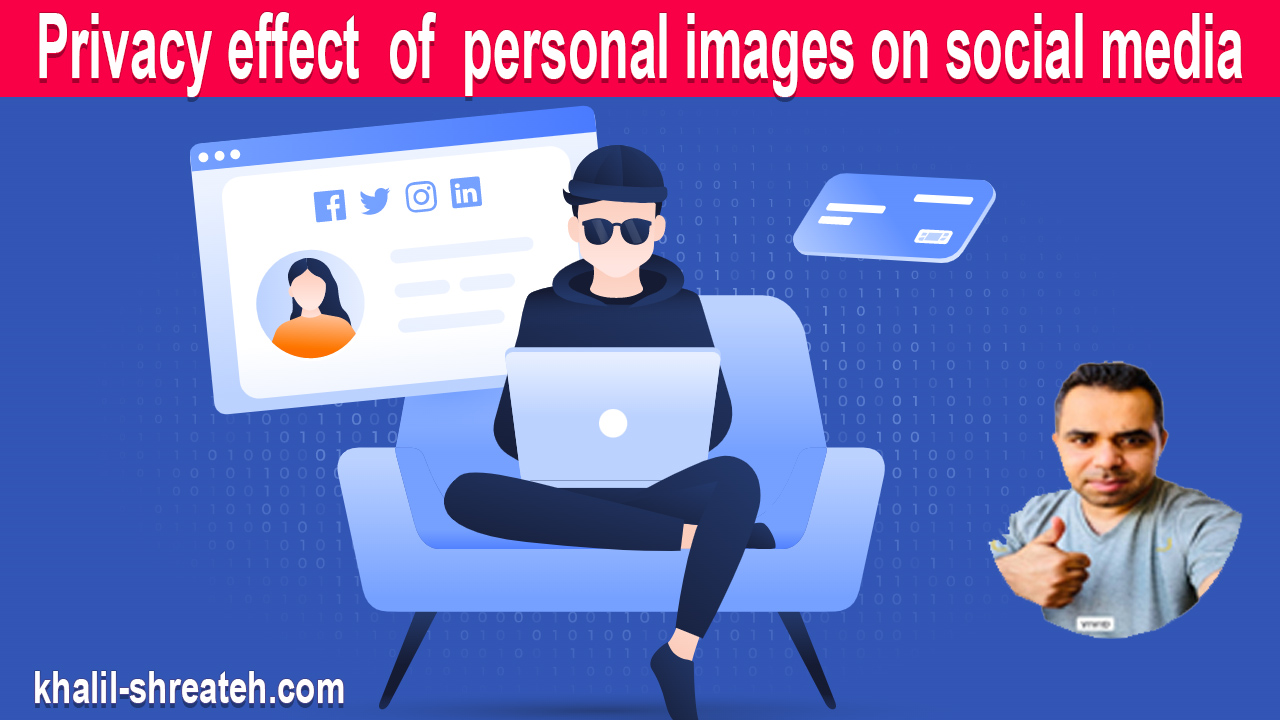There are several privacy concerns that can arise when using personal images on social media.

There are several privacy concerns that can arise when using personal images on social media.
-
Loss of control over personal information: When you post a personal image on social media, you lose control over who sees it and how it is used. Even if you only share the image with a small group of friends, it can be shared or reposted by others without your permission. This can lead to unwanted exposure of your personal information and image to a wider audience.
-
Risk of identity theft: Personal images can be used to impersonate you online or to steal your identity. Criminals may use your images to create fake accounts or profiles in your name, which can be used for nefarious purposes such as phishing scams or spreading misinformation.
-
Risk of image misuse: Personal images can be misused in a variety of ways, such as being edited or manipulated to create misleading or false content. This can damage your reputation and cause problems for you in the real world.
-
Risk of unwanted attention: Posting personal images on social media can also attract unwanted attention from strangers, such as inappropriate comments or unwanted advances. This can be especially concerning for children and young people who may be more vulnerable to online harassment.
To protect your privacy when using personal images on social media, it's important to be mindful of the information and images you share, and to use privacy settings and controls to limit who can see your content. It's also a good idea to think carefully about the context in which you are sharing your images, and to be aware of any potential risks or consequences.
Here are a few more things to consider when it comes to the privacy implications of using personal images on social media:
-
Think before you post: Before you post a personal image on social media, consider whether it's something that you would be comfortable with anyone seeing. Think about the potential consequences of sharing the image, and whether you are comfortable with the level of exposure that it may receive.
-
Use privacy settings: Most social media platforms offer privacy settings that allow you to control who can see your content. Be sure to use these settings to limit access to your personal images to only trusted friends and family members.
-
Be aware of image metadata: When you take a photo with your phone or camera, it may include metadata such as the location where the photo was taken. This metadata can be accessed by anyone who has access to the image, so it's important to be aware of what information is being shared and to take steps to protect your privacy if necessary.
-
Don't share sensitive or identifying information: Personal images that include sensitive or identifying information, such as your home address or phone number, should be avoided. This information can be used to locate you or to steal your identity.
-
Use strong passwords: To protect your social media accounts and the personal images that you share on them, it's important to use strong, unique passwords and to enable two-factor authentication whenever possible. This can help to prevent unauthorized access to your accounts and the personal information that they contain.
-
Geotagging: Some social media platforms allow users to add location data to their posts, including images. This can be useful for sharing your location with friends and family, but it can also reveal your location to strangers. If you don't want to share your location, it's important to turn off geotagging for your posts.
-
Third-party apps: Many social media platforms allow users to connect their accounts to third-party apps and websites. These apps can access your personal data, including your images, and may use this information for their own purposes. It's important to be careful about which apps you connect to your social media accounts and to regularly review the privacy settings for these apps.
-
Data mining: Social media companies may use personal images and other data to create detailed profiles of their users. This data can be used to target ads and content to specific users, but it can also be accessed by third parties for other purposes. To protect your privacy, you should familiarize yourself with the privacy policies of the social media platforms you use and be cautious about the information you share.
-
Cyberbullying: Personal images can be used to bully or harass others online. This can be especially harmful for children and young people, who may be more vulnerable to online bullying and may not have the skills or resources to cope with this type of abuse. It's important to be aware of the potential risks of sharing personal images on social media, and to encourage children and young people to be cautious about the content they share online.
- Overall, it's important to be mindful of the privacy risks associated with using personal images on social media and to take steps to protect your privacy. This may involve being selective about the information and images you share, using privacy settings and controls, and being aware of the potential consequences of sharing your personal data online.
By following these tips, you can help to protect your privacy and reduce the risks associated with using personal images on social media.
